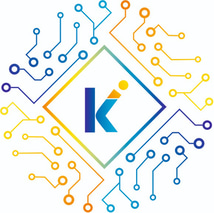Active components:
Active components are the fundamental building blocks of modern electronic systems, enabling the creation of complex circuits that can amplify, switch, and process signals. These components rely on the principles of semiconductor physics, electromagnetism, and quantum mechanics to operate.
Semiconductor Physics and Device Operation
To understand active components, it's essential to delve into the realm of semiconductor physics. Semiconductors are materials with electrical conductivity between that of conductors and insulators. The most common semiconductor material is silicon (Si), which is used in the fabrication of various active components. The operation of active components relies on the manipulation of charge carriers (electrons and holes) in semiconductor materials. By carefully controlling the flow of charge carriers, active components can amplify, switch, or modify signals.
Transistors: The Building Blocks of Active Components
Transistors are the most fundamental active components, consisting of three layers of semiconductor material with varying electrical properties. The three layers are:
Base: The middle layer, which controls the flow of charge carriers between the other two layers.
Collector: The layer that collects the charge carriers emitted by the emitter.
Emitter: The layer that emits charge carriers into the base region.
Transistors can be broadly classified into two categories:
Bipolar Junction Transistors (BJTs): BJTs rely on the manipulation of both electrons and holes to control current flow.
Field-Effect Transistors (FETs): FETs rely on the manipulation of electrons (or holes) to control current flow.
Amplification and Switching
Transistors can be used for both amplification and switching applications. Amplification involves increasing the strength of a weak signal, while switching involves controlling the flow of current between two distinct states (e.g., on and off). Amplification is achieved by using the transistor as a current-controlled current source. The transistor's base-emitter junction is forward-biased, allowing a small input current to control a larger output current. Switching, on the other hand, is achieved by using the transistor as a voltage-controlled current switch. The transistor's base-emitter junction is reverse-biased, allowing a small input voltage to control a larger output current.
Operational Amplifiers and Logic Gates
Operational amplifiers (op-amps) and logic gates are two examples of active components that rely on transistors to perform complex functions. Op-amps are high-gain amplifiers that use feedback mechanisms to achieve precise control over output signals. They are widely used in analog circuits, such as filters, oscillators, and signal processing systems. Logic gates, on the other hand, are digital circuits that perform logical operations on input signals. They are the fundamental building blocks of digital electronics, enabling the creation of complex digital systems.
Noise, Distortion, and Nonlinearity
Active components are not ideal devices; they exhibit noise, distortion, and nonlinearity that can impact circuit performance. Noise refers to the random fluctuations in output signals, while distortion refers to the alteration of signal waveforms. Nonlinearity, on the other hand, refers to the deviation from ideal behavior, resulting in undesired effects such as harmonic distortion and intermodulation.
Conclusion
Active components are the heart of modern electronic systems, enabling the creation of complex circuits that can amplify, switch, and process signals. By understanding the principles of semiconductor physics, transistor operation, and circuit design, engineers can create innovative solutions that transform the way we live and work.
